Nowhere to live, no hope for life As thousands of low-income Winnipeggers hopelessly search for affordable, safe places to live, frustrated community activists are calling for immediate government action
Read this article for free:
or
Already have an account? Log in here »
To continue reading, please subscribe:
Monthly Digital Subscription
$0 for the first 4 weeks*
- Enjoy unlimited reading on winnipegfreepress.com
- Read the E-Edition, our digital replica newspaper
- Access News Break, our award-winning app
- Play interactive puzzles
*No charge for 4 weeks then price increases to the regular rate of $19.00 plus GST every four weeks. Offer available to new and qualified returning subscribers only. Cancel any time.
Monthly Digital Subscription
$4.75/week*
- Enjoy unlimited reading on winnipegfreepress.com
- Read the E-Edition, our digital replica newspaper
- Access News Break, our award-winning app
- Play interactive puzzles
*Billed as $19 plus GST every four weeks. Cancel any time.
To continue reading, please subscribe:
Add Free Press access to your Brandon Sun subscription for only an additional
$1 for the first 4 weeks*
*Your next subscription payment will increase by $1.00 and you will be charged $16.99 plus GST for four weeks. After four weeks, your payment will increase to $23.99 plus GST every four weeks.
Read unlimited articles for free today:
or
Already have an account? Log in here »
Hey there, time traveller!
This article was published 13/08/2021 (1582 days ago), so information in it may no longer be current.
The two-bedroom flat just north of the Main Street railway underpass costs Mark Olfert $575 a month. There’s no charge for the constant wail of emergency-vehicle sirens.
It’s slightly cheaper than the $625 he paid a month to live alongside drug dealers at a Langside Street rooming house. He lived there for two stressful years until a fire ripped through the building last February, destroying almost all of his possessions. One of his three cats went missing in the aftermath.
It’s not a trajectory Olfert would have predicted. He had a normal life growing up in St. Vital. He held a steady job stocking shelves at a Superstore and rented a nearby room for 12 years.

It came crashing down three years ago after an injury left him on assistance, then out of a job. Facing a jacked-up rent increase after his landlord made significant renovations, Olfert had to give up his place and scramble to get one of the dwindling number of affordable-housing units in Winnipeg.
Despite his housing struggles, Olfert, who gets by on a Canada Pension Plan disability program, is thankful for friends he’s met through advocacy groups and his Mennonite church. He says he likely would have turned to drugs and ended up sleeping in a bus shelter if volunteers hadn’t helped him find a place to live.
“I’m just very lucky I didn’t end up that way,” he says.
● ● ●
In a city that routinely boasts having some of the cheapest housing prices in Canada, finding a safe, basic place to call home is a near-impossible task for thousands of Winnipeggers.
Similar struggles take place across the country. The federal government has only recently begun to readdress it, after being absent from the affordable-housing market for more than two decades.
In November 2017, the Trudeau government launched its national housing strategy, saying it would offer provinces money to fix decrepit public housing and provide funding stability to non-profits so they could create more units.
The Liberals originally announced $40 billion for the plan but have since expanded it to $72.5 billion.
Yet that’s nowhere near the level of support Ottawa provided for housing in the last century. A report this week from the Parliamentary Budget Officer says the housing plan is not keeping up with growing demand.
The federal funding is backloaded, with most of the money earmarked closer to 2028. An urban-Indigenous housing plan is nowhere in sight, nearly four years since it was promised. The latter is acutely felt in Winnipeg, which has the highest number of Indigenous households living in inadequate conditions compared to other cities.
Indigenous people off-reserve in Manitoba are 1.7 times more likely than non-Indigenous Manitobans to be living in a home considered overcrowded, unaffordable or in major disrepair.
While Ottawa and Manitoba have pledged to add 2,108 affordable-housing units to the existing 22,656 stock, their agreement deems a $964 monthly rent for a one-bedroom unit to be affordable in Winnipeg, an amount that remains out of reach for many.
Funds designed to get more housing built have instead been shifted to maintain existing social housing, while some non-profits are bracing for radical changes to how they operate.
Despite the promise of billions of dollars, those on the housing front lines balk at the idea that governments are doing enough.
“I really disagree. They don’t have enough affordable housing for people,” says Olfert, who now volunteers at West Broadway Community Services to help other Winnipeggers find places to live.
● ● ●
Richard Freeman has seen a lot of people come and go in his decades as a member of the Westminster Housing Co-operative, where all 35 units have rents pegged to incomes.
A single mom worked her way up the income ladder, eventually saving enough money for a down payment on a house.
Two parents and their child went from a squalid, single-room apartment elsewhere in the city to a two-bedroom flat in the co-op. The parents took classes and got better jobs, and their child had more privacy.
“Everyone in the family went on to thrive,” Freeman says.
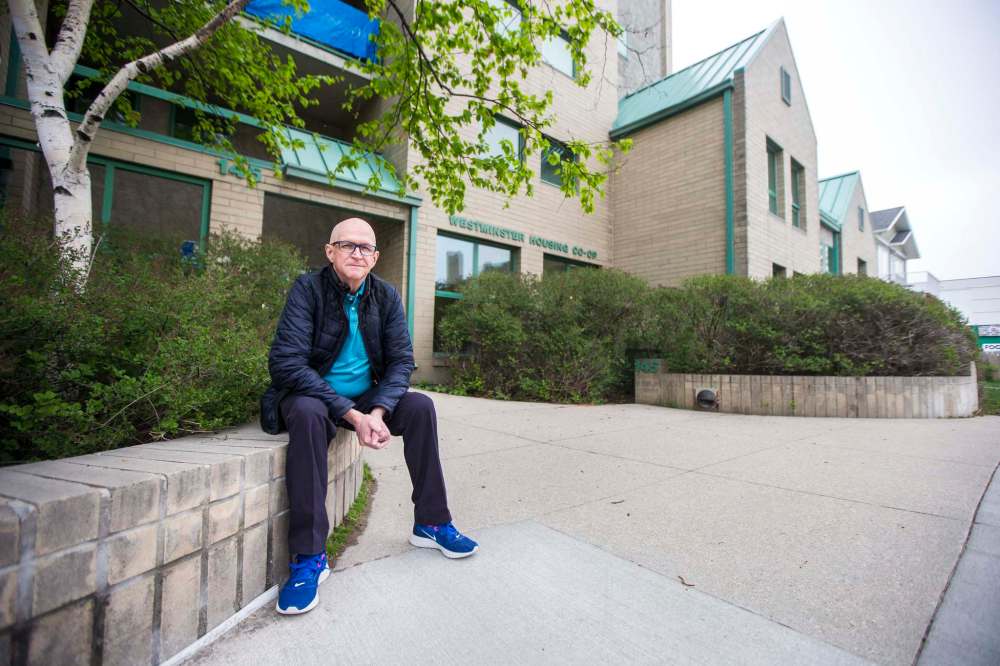
Rent at the Maryland Street co-op is based solely on income, with people paying about 30 per cent of what they earn, regardless of their wage.
“Seeing these little success stories, it’s like, wow, could that have happened if they were struggling, when they’re worried about their housing?” he says. “That’s the foundation.”
Freeman moved into the co-op in 1995, and thought he’d stay a year before moving to Osborne Village. But the co-op was a saving grace as he circled between short-term contracts with non-profit organizations as he established his career.
Just as he moved in, Ottawa started wrangling its way out of affordable housing for the first time in decades.
The federal government was the main driver of building and providing affordable housing from the 1930s up until the mid-1980s, when Ottawa pivoted to cost-sharing housing projects with provinces.
But faced with high deficits, the Chrétien government downloaded housing costs to the provinces in the mid-1990s and ended almost all funding for social housing, save for occasional grants.
Since then, provinces have been left to maintain their housing stock, with growing wait lists and buildings falling into disrepair.
Adam Vaughan, the Toronto-area Liberal MP who shepherds the new federal plan, describes his party’s cuts of the 1990s as a catastrophic mistake.
“When governments walk away from housing, they walk away from the needs of Canadians,” says Vaughan.
Greg Suttor, a widely respected Canadian housing researcher, says the Trudeau government deserves credit for committing provinces to maintaining and building new units, instead of providing one-off grants periodically.
“It’s a big increase — but it’s not at the magnitude of what we had a generation ago,” he says.
● ● ●
Muse Flats, a 12-storey white tower that includes 119 rental units at premium, market and affordable rates, rises above Qaumajuq, Winnipeg Art Gallery’s new Inuit centre.
Stroll further south on Colony Street, and the 14-storey West Broadway Commons towers over the All Saints Anglican Church, with 46 affordable units intermeshed among 73 market-rate units.
Both projects are offering units at rates for low-income people, subsidized by revenue from the other renters.
“Without the national housing strategy programs, neither of those projects would have gone up,” says Jeremy Read, who has overseen both projects as head of the University of Winnipeg Community Renewal Corp.
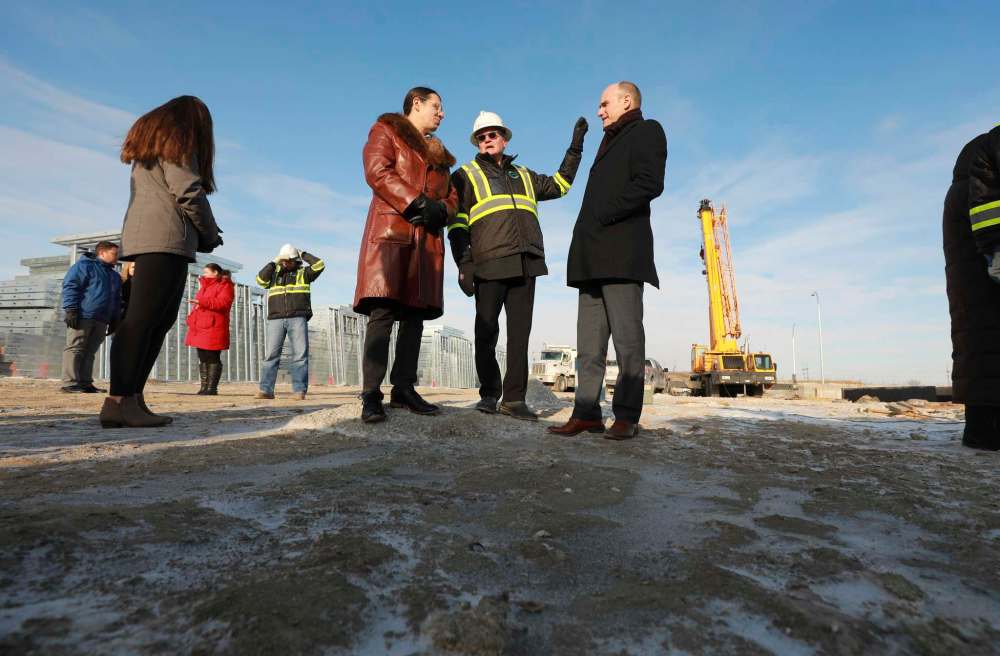
“As a result of our projects being built, there’s another 229 units, 92 of which are affordable, that otherwise would not have existed in Winnipeg’s downtown.”
The two projects illustrate the potential of the national housing strategy — and its limits.
Read’s group had its own equity to secure loans. However, most non-profits would need to raise funds for the cash needed to take on millions of debt.
“For some of these programs you have to show a certain amount of equity,” Read says. “Whereas the non-profits… just see a need in their immediate neighbourhood, and want to address that.”
Instead of just giving non-profit groups cash to build, Ottawa has favoured mixed-income housing projects such as Read’s, where revenue from market-rate apartments subsidize the cheaper units.“When governments walk away from housing, they walk away from the needs of Canadians.” — Adam Vaughan, the Toronto-area Liberal MP
“It positions organizations in the long term to develop some of that equity, and I think that’s really important,” he says.
“It takes out the variability of government changes and policy-direction changes.”
Vaughan echoes that thinking.
“It’s important for all community-housing operators who require subsidies to create good strong, mixed-income buildings and neighbourhoods,” he says.
But Suttor argues that’s too large of a hurdle for grassroots groups, who have to navigate a complicated process.
“This is a federally delivered program where local groups, municipalities and non-profits have to scramble and come up with quite a lot of non-federal money, and compete in a closed, nationwide competition.”
The housing strategy has also caused confusion over what gets counted as affordable, which leans toward middle-class earners instead of low-income people.
A financing program offers loans to build rental units that must be priced at, or below, 30 per cent of median household income for the city. Winnipeg family incomes stand around $90,000, meaning rent can be as high as $2,250 per month.
At the newly completed Park City Commons project in Transcona, the affordable rent for a one-bedroom unit has been set at $945 a month, which is still cost prohibitive for many.
Christina Maes Nino, head of the Manitoba Non-Profit Housing Association, says that’s only to be expected when housing funds go to private developers.
“It is not really where I think they should be targeting public dollars,” she says. “It should be to those that need more assistance, who can’t afford to rent a home.”
● ● ●
In St. James, the board of a non-profit housing organization can feel the clock ticking.
“Canada, as a country, should do a better job for people that need housing,” says John Gosselin, chair of Friends Housing Inc.
The group maintains 28 units for people living with chronic mental illness, as well as 15 townhouses for people who qualify for housing subsidies.
The Sturgeon Road project opened in 1990, with a mortgage where Manitoba Housing essentially pays itself, by paying for the loan, property taxes and a repairs fund.
That agreement expires in July 2024, when the mortgage will be fully amortized. What happens at that point is unclear.
In Manitoba, about 7,000 housing units from 135 non-profits are pegged to similar agreements. Technically, when the subsidy ends everyone must pay full rent, but no one expects that to happen.
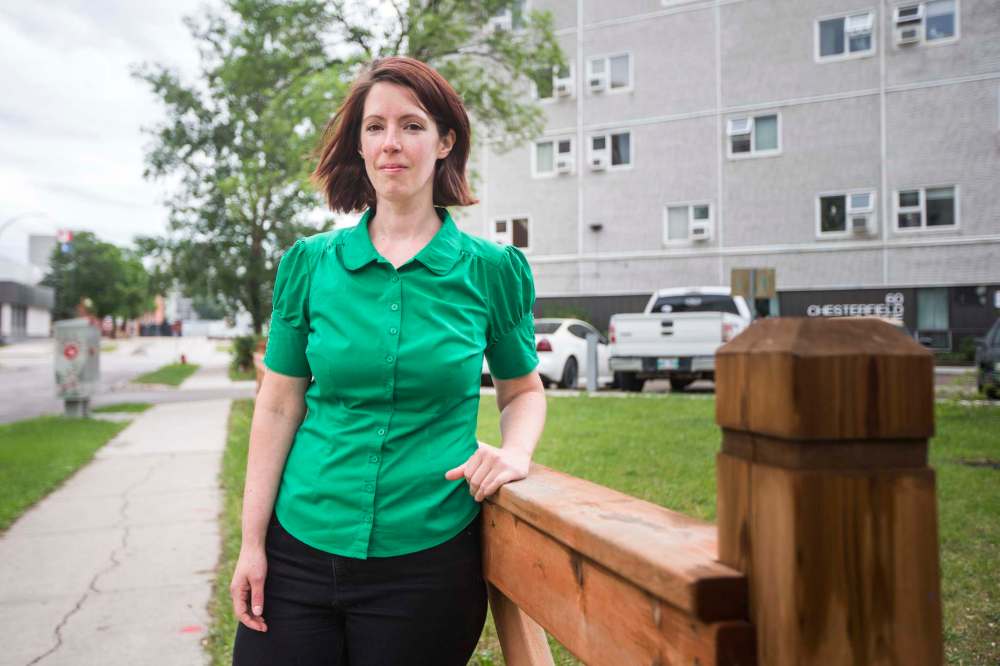
Instead, Manitoba Housing officials have suggested non-profits move to a mixed-income model, keeping some units as fully subsidized while others are put up for market rates.
“We’re not happy about that, as we’re feeling very committed to the subsidized-housing format,” says Gosselin, who argues that approach would defeat the purpose of a non-profit focused on those with mental-health issues.
Since at least April, Friends’ 28-unit apartment building has a waiting list of more than 50 people.
“We have very little turnover,” he says. “There needs to be more money put into providing housing.”
At a February 2021 meeting held by MNPHA, dozens of groups talked about facing the same dilemma.
Westminster Co-op is among them, with an operating agreement that ends in February 2025. That co-op is grappling with whether they can keep all housing charges pegged to tenant incomes, or if they’ll have to break the formula and allow half the units to be priced at market rates.
The idea of changing existing subsidized units into general, market-rate units jars housing advocates in cities such as Winnipeg, where officials estimate 300 new affordable units must be built each year over a decade, simply to keep up with demand.
“The government has suggested that they would like to see those buildings become self-sustaining and, fundamentally, I think most people in my world would agree that housing for the lowest-income people is part of the social safety net, which is a government responsibility,” Maes Nino says.
Even when Ottawa funds new construction of housing units, it rarely signs new operating agreements, which commit federal dollars over the course of decades.
The Parliamentary Budget Office reported this week that 183,019 low-income public housing units are no longer funded by these agreements since the Liberal plan took effect, meaning 42 per cent of these units across Canada no longer have long-term funding.
“They’ve come back, but every way they’ve come back is intended to reduce any dependency on government for housing,” Maes Nino says.
Meanwhile, Manitoba is breaking ranks with most provinces by using most of its cost-shared $450.8 million in housing-strategy funds to renovate existing Manitoba Housing units, rather than partnering with charities to fund new construction.
“Clearly the need for housing is now. Interest rates are low. I don’t know why in the world they wouldn’t be building at a time like this,” Maes Nino says.
Families Minister Rochelle Squires, who oversees Manitoba Housing, says the PCs inherited a backlog of maintenance work when they took office in 2016.
The agency committed in 2017 to repairing 5,470 units by 2028.
“We rapidly repaired some of our existing stock, so that we don’t have any vacancies in the stock that we own,” she said in May.
“We can utilize each and every affordable housing unit in the province and not have any of it out of commission because of waiting for maintenance.”
Housing non-profits see that as displacing federal funds intended to get new units built, to instead save the provinces money by repairing older ones.
In April, the Free Press requested a breakdown of how much funding Manitoba Housing has allocated and actually spent, and how much came from federal dollars. The department did not provide a response by early August.
The province says it has helped create 743 new affordable and social housing rental units since 2016, which is proportionately less than other provinces such as British Columbia, which has nearly maxed out Ottawa’s cost-shared programs.
● ● ●
Five years ago, fire trucks surrounded a burning abandoned apartment building in North Point Douglas. Today, it’s surrounded by construction vehicles. The Anishinaabe group Shawenim Abinoojii is upgrading the Alfred Avenue building to create 18 apartments for Indigenous youth exiting the foster-care system.
About a kilometre south, the Salvation Army is upgrading unused office space to create 20 housing units at 72 Martha St. They’ll use modular walls to create different room sizes for families undertaking a three-month program to transition from street life into permanent housing.
Both projects were funded through a COVID-19 support program with a simple premise: give grassroots groups money and a 12-month deadline to get some of the most vulnerable Canadians a place to live.
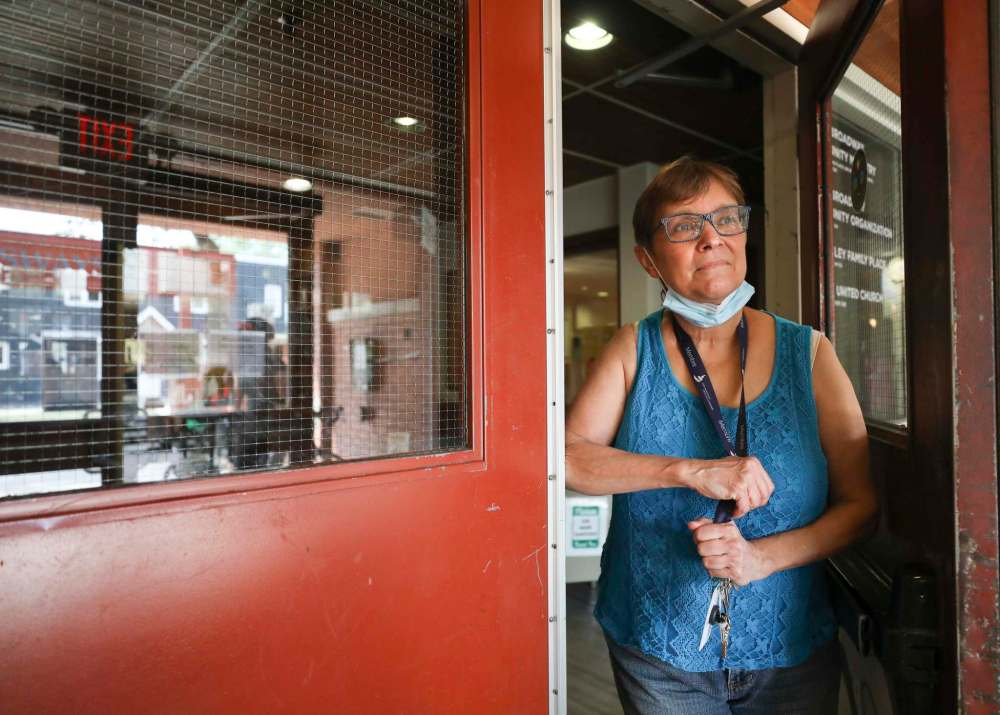
The Rapid Housing Initiative was introduced in October 2020, with $1 billion for groups already registered as non-profits who owned land and had a plan to create new housing units.
Within six months, groups came forward with $4.6 billion in eligible requests. Ottawa expanded the program in April to a total of $2.5 billion in funding, which will create 4,777 new housing units.
“There were a lot of hoops to jump through, and yet people were ready to go,” Maes Nino says.
Similarly, Ottawa cited the pandemic when it expedited funding for Main Street Project’s renovation of the Mitchell Fabrics building at Main Street and Logan Avenue. The shelter was housing people before the year ended, with construction starting months ahead of schedule.
“It shows me it’s not an issue of the sector’s capacity… groups are ready and able to develop housing for those in the highest need,” Maes Nino says.
She is left to wonder why Ottawa didn’t instead fund all the rapid-housing projects that groups proposed.
The spring budget expedited $1.3 billion that the Liberals had promised for housing in later years and added $2.5 billion in various grants and loans.
And yet the Canadian Housing and Renewal Association called the April budget “a missed opportunity” for non-profits to use low interest rates and get thousands of people off the streets.
In an interview, Federal Families Minister Ahmed Hussen pushes back, saying his government is quickly dolling out housing benefit cheques for low-income Canadians, so they can find a safe place to live while more affordable apartments get built.
He rejects the idea his government has backloaded the housing strategy, with most of its funding earmarked for beyond one or two election cycles. He instead argues Ottawa needs the provinces and cities to step up more than they have.
“This has to be a joint partnership, and it has been, but we need to keep at it,” he says.
Hussen notes the government doubled a rental-construction scheme to $25.7 billion, which he argues will create more supply and, thus, draw down prices.
“I’m very optimistic, and I think this was a fantastic budget for housing.”
● ● ●
Housing struggles to get on the radar between elections, despite the snowballing social costs incurred when Canadians can’t get adequate housing. That cost is evident across the city, from rundown rooming houses to police making wellness calls at Main Street hotels to tent encampments under bridges and stretching along riverbanks.
“Your typical Treasury Board or ministry of finance official doesn’t get long-term housing whatsoever,” Suttor says.
The federal plan is attempting to take a long-view, putting an emphasis on constructing sustainable units in accessible buildings, and revitalizing downtown cores. So far, Ottawa and the provinces have committed funding to create 58,900 new units, and repair 68,000 housing units.
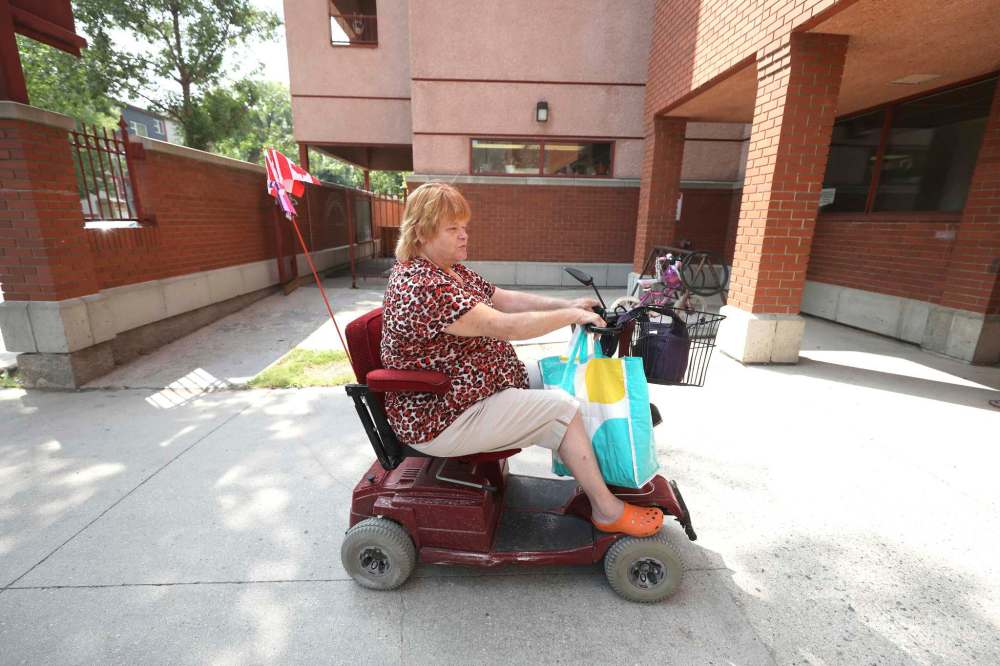
Yet even with that funding, Canada sits near the bottom of proportionate spending on housing among rich countries, Suttor points out.
The knock-on impact can be seen in the people who show up at West Broadway Community Services.
Paula Keirstead, a volunteer mentor for the 1JustCity program, helps connect Winnipeggers with some of the housing programs the Trudeau government has launched, which she says are often bureaucratic.
“It can take a lot of chutzpah and energy for folks to take on these various systems, even if the systems are collaborative,” she says.
Keirstead says the few stipends and apartments available are too often directed at people from certain groups, such as people with disabilities, or youth exiting foster care.
“Sometimes people just need a hand, and it can’t be compartmentalized as to why, and that means we have to ask ourselves as Canadians: do we see housing as (a) right?”
Lynda Trono, the program’s community minister, has seen people pushed out of low-income apartments and accumulate physical and mental-health issues as they go from unsafe dwelling to unsafe dwelling.
They ultimately check enough boxes to end up in an apartment for people in critical need — when all they needed was a subsidized apartment before their lives fell apart.
“They’re searching and searching and not finding anything,” she says.
To her, the talk of a revolutionary housing strategy hasn’t translated into any visible change since she started her job nine years ago.
“There’s people carting all their stuff around and having no place, except under somebody’s porch or in front of our emergency exit,” says Trono, referring to the West Broadway location.
“You always hear, ‘Oh a billion dollars is going towards this, and then you find out it’s across the country, for 10 years, and it’s, like, a pittance.”
She throws up her hands, laughing sardonically at the scale of the problem.
“It seems like those governments that are responsible for housing really don’t care about people who are living in poverty,” she says, holding her head over her pink laptop, with her fingers on her temples.
Her email inbox pings every few minutes — a man needing steel-toed shoes; another person on provincial assistance who can’t find an affordable apartment.
“I have this vision of us ending up like one of those American cities, with a great big tent city all along the sidewalk,” she says, “because nobody wants to help anybody.”
Manitoba has nearly tripled its spending on the Rent Assist subsidy, stipends low-income people receive to make their apartments and rooming-house rooms cheaper.
Read says that will help people, but the province hasn’t shifted from focusing more on helping with demand, to actually creating more supply.
“In Manitoba it can be a challenge,” Read says.
Squires says the province is now shifting to building more housing stock, especially in rural Manitoba.
“We need to continue on with this, so that we can ensure that all Manitobans have a safe place to call home,” she says.
dylan.robertson@freepress.mb.ca
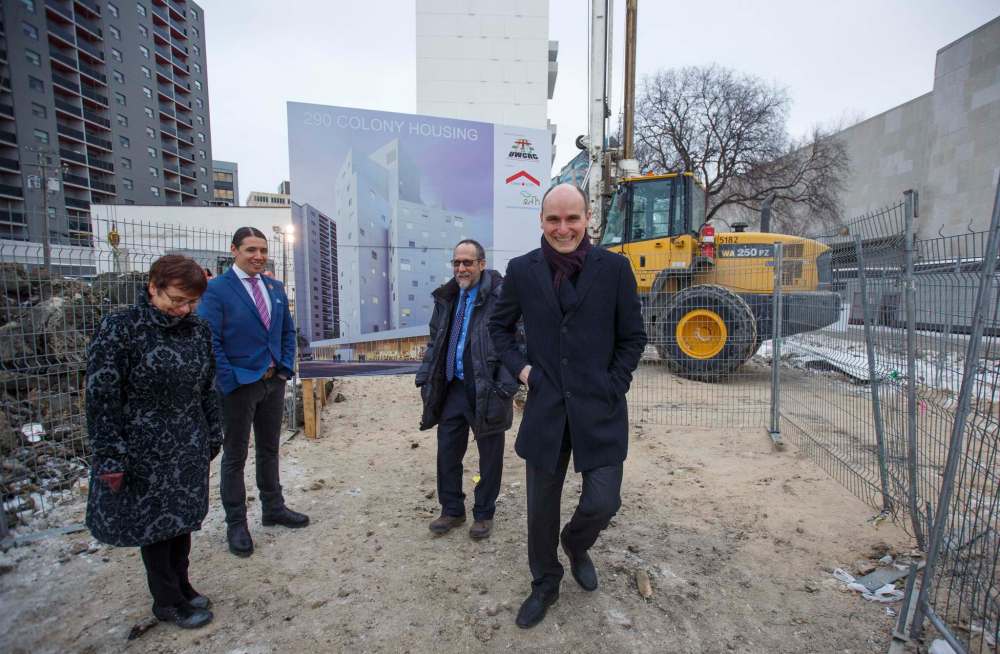
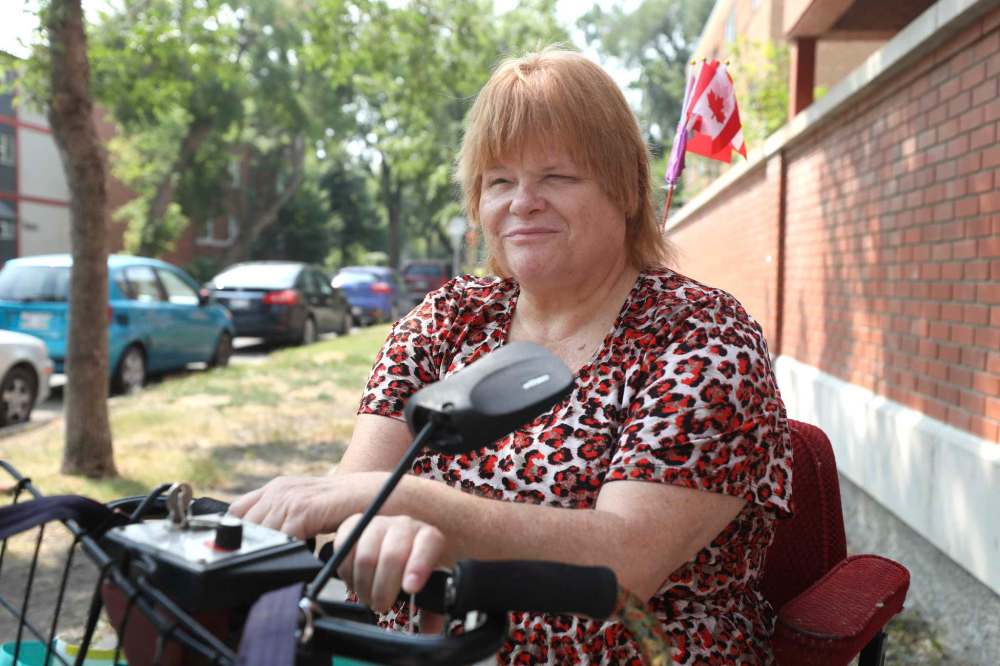
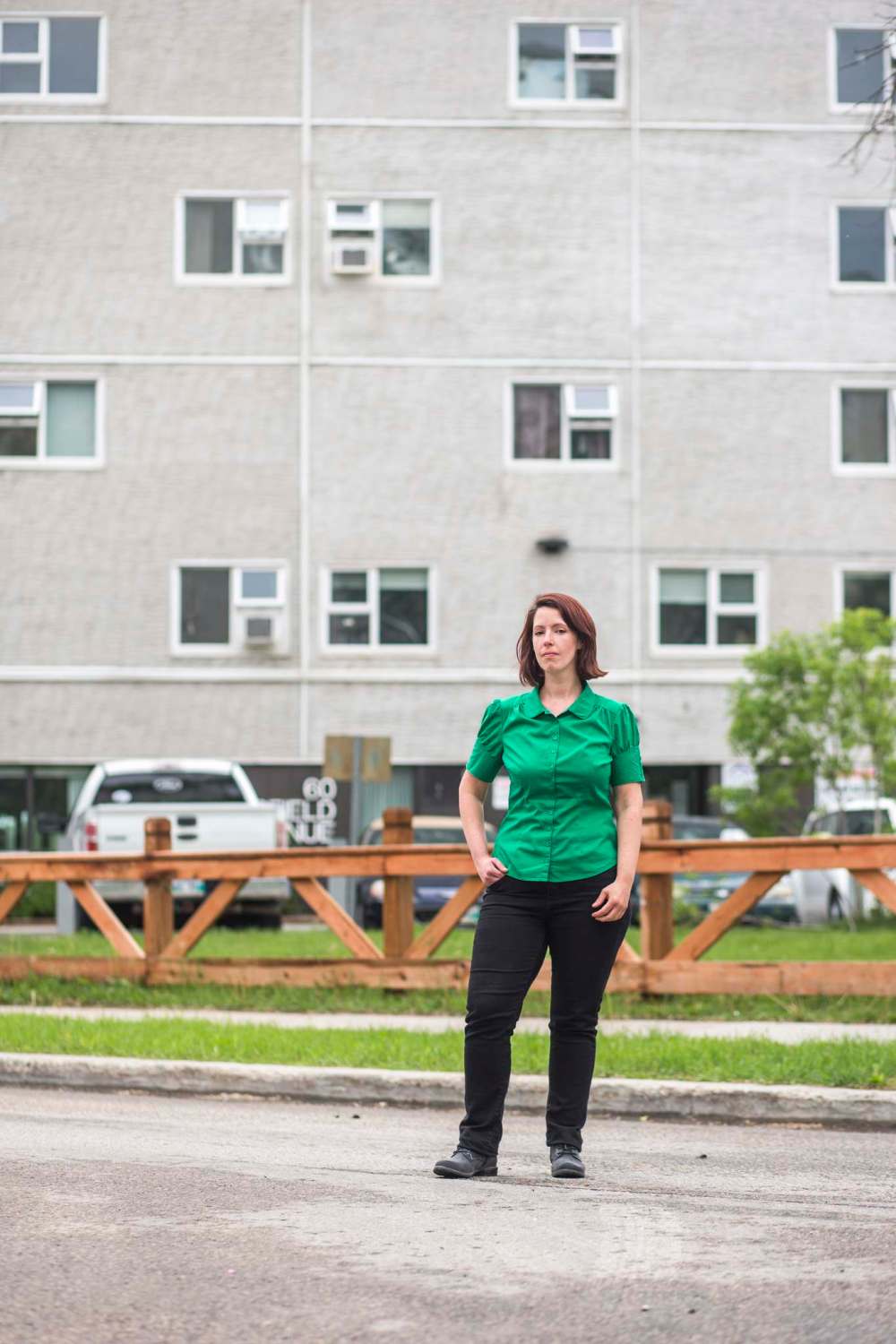
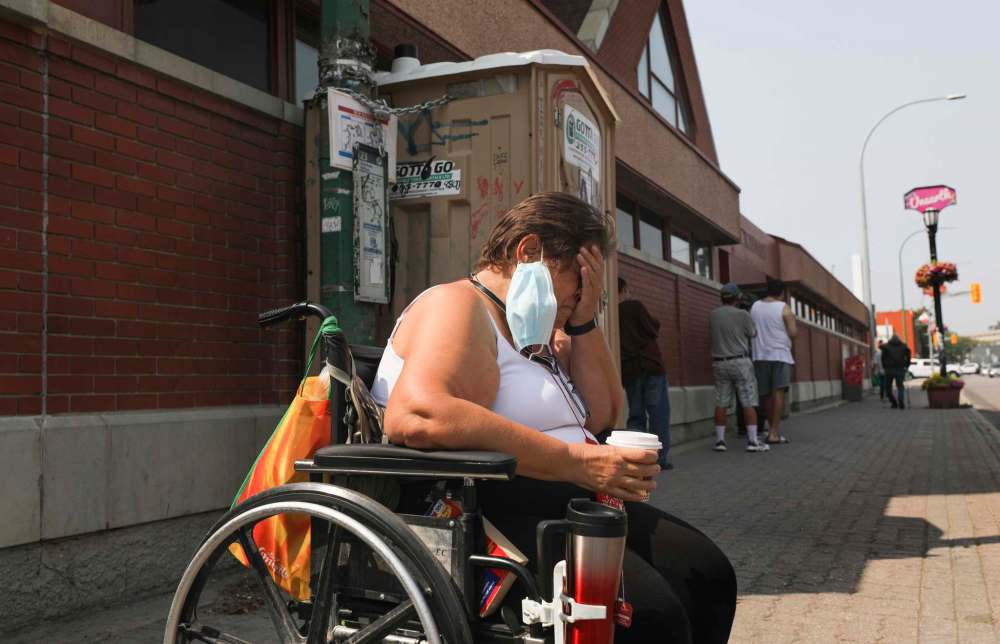
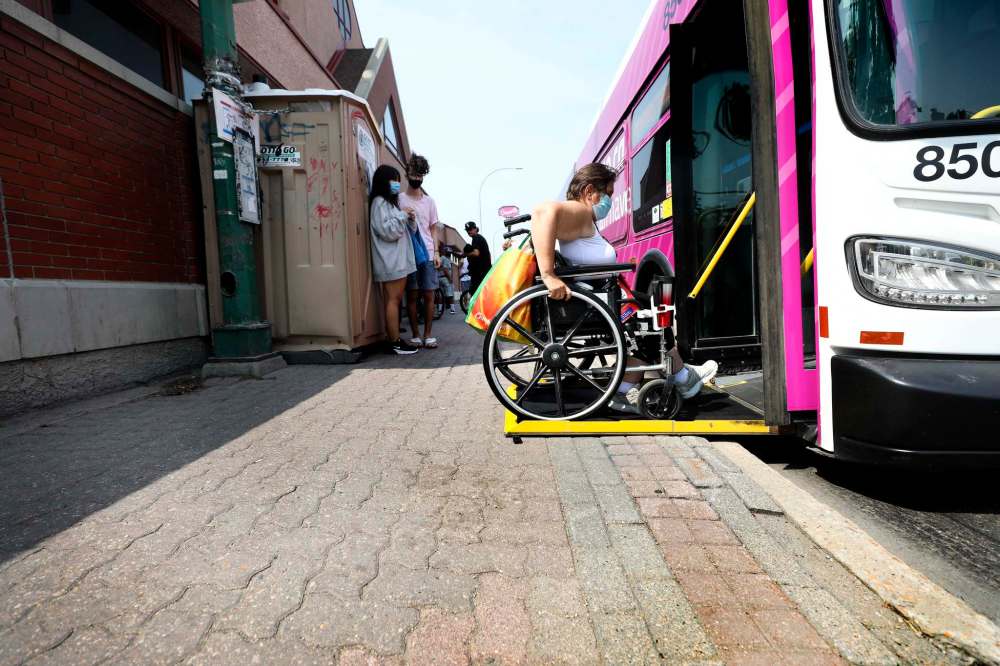
History
Updated on Saturday, August 14, 2021 11:45 AM CDT: Removes irrelevant photo from thumbnail, replaces it with photo of subject.







